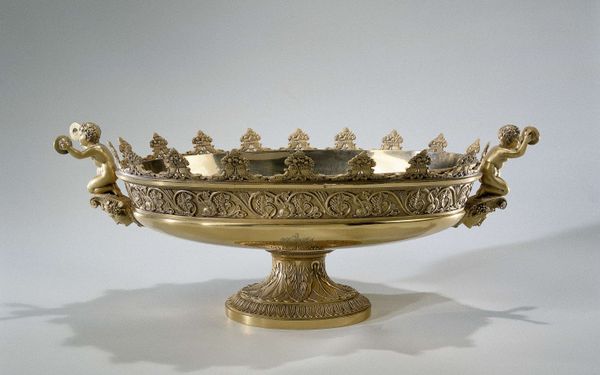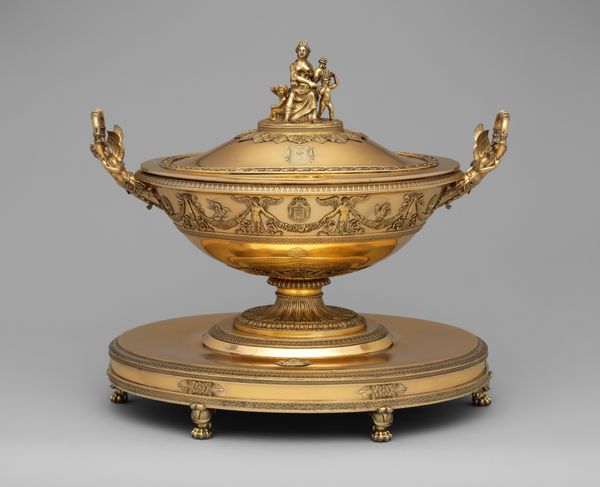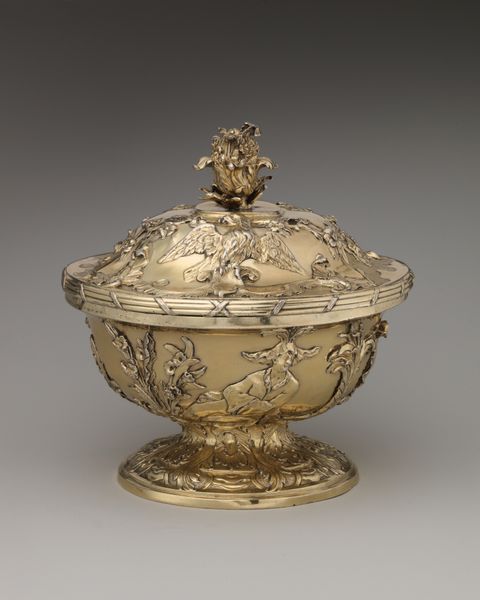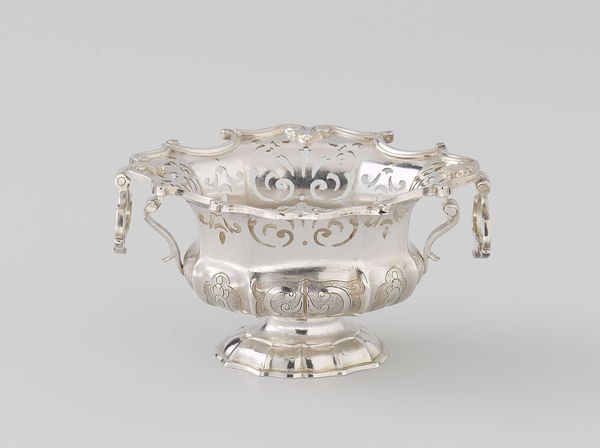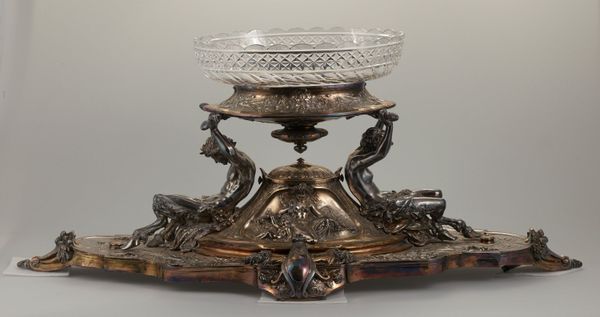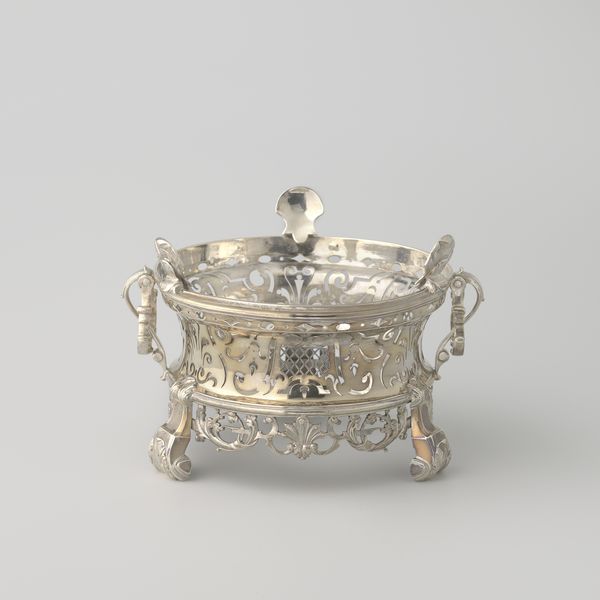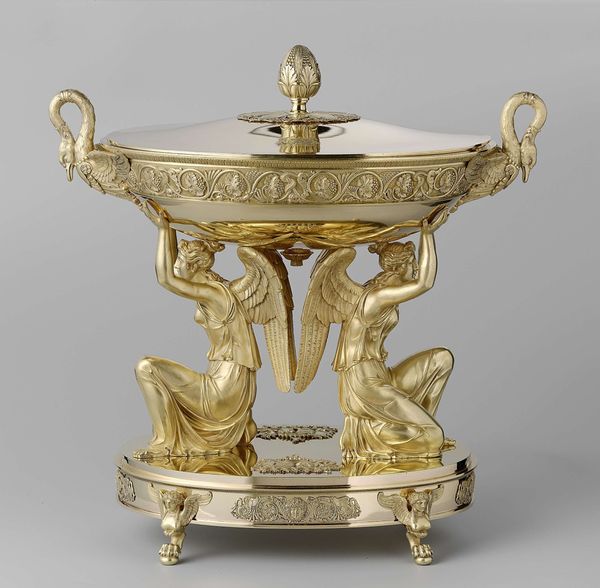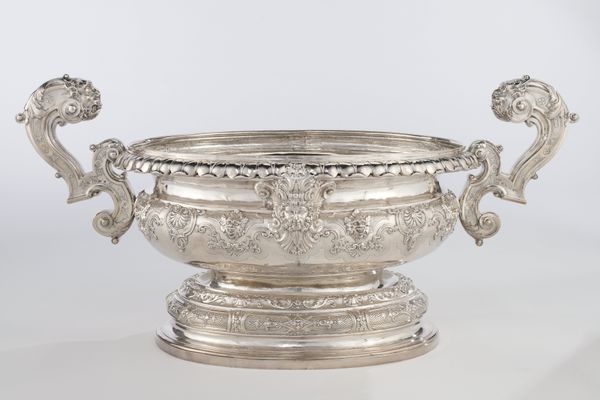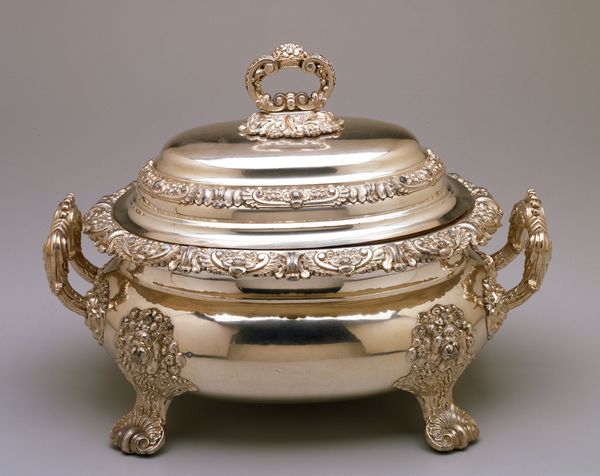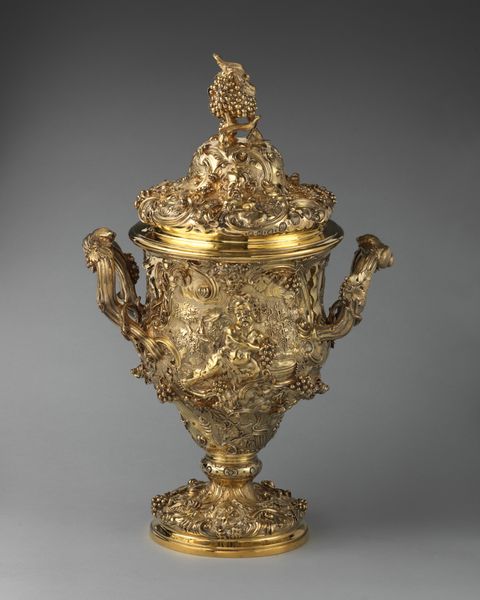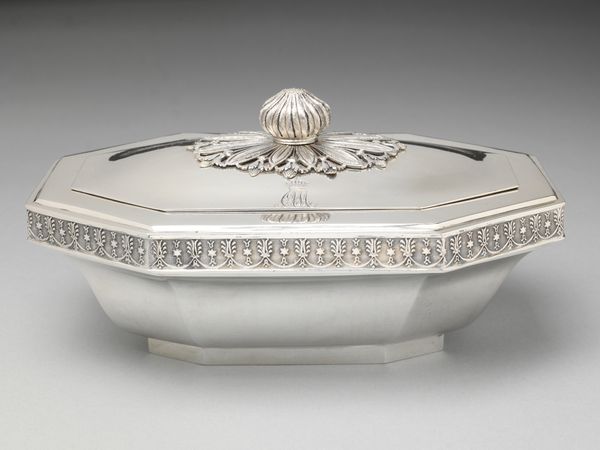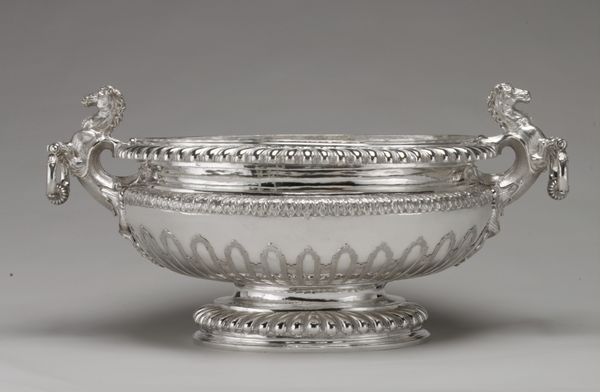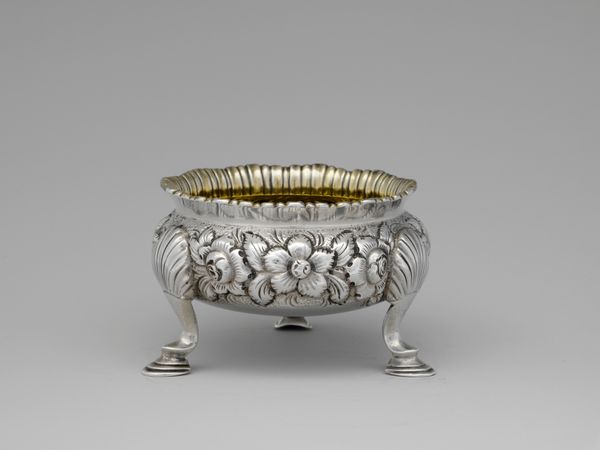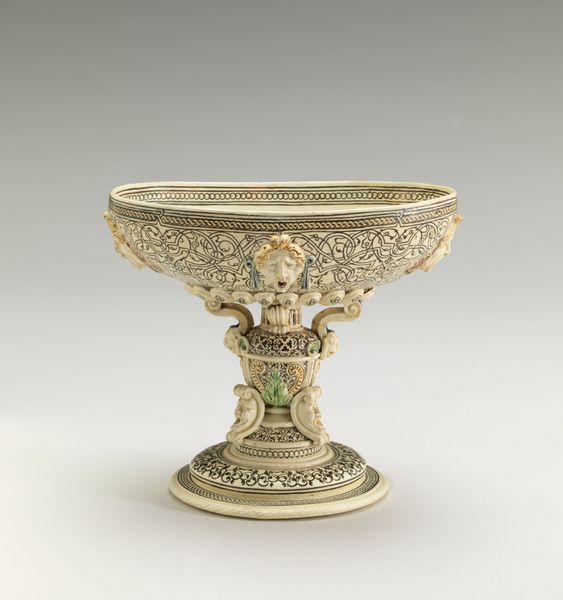
Cloches (dish covers), coolers, soup tureens, sauceboats, salt cellars, pepper and mustard pots c. 1819
0:00
0:00
Dimensions: height 17.6 cm, width 47.8 cm, depth 28.1 cm, weight 4105 gr
Copyright: Rijks Museum: Open Domain
Editor: So this is a silver bowl made by Jean-Baptiste-Claude Odiot around 1819, showcasing incredible metalwork. It's incredibly ornate, almost excessively so, with these little cherubs holding what look like cymbals. What strikes you most about its design and cultural context? Curator: The Odiot silver service embodies the opulence of the restored Bourbon monarchy following the Napoleonic era. Consider this not simply as tableware but as a declaration of restored power. The intricate baroque details, far from being purely decorative, function as symbols linking the ruling class to earlier eras of perceived glory and unquestioned authority. What’s your read on the inclusion of the cherubs? Editor: They seem like purely aesthetic additions, like classical decoration just for show? Curator: Perhaps. But consider their context: The role of decorative arts was being redefined during this period. Objects like these played a significant role in shaping and reinforcing social hierarchies. The cherubs, for example, may not only reflect classical allusions but also reinforce notions of dynastic continuity and divine right. How do you see an object like this functioning in a society recovering from revolution? Editor: So, it's not *just* a pretty bowl. It's like... propaganda, reinforcing the power structure and suppressing any ideas of change or dissent by promoting the old, established order? Curator: Precisely. Silverware, architecture, public monuments – all could serve to rebuild not only physical structures but the very fabric of society, in a manner that favored the ruling elite. Editor: Wow, that definitely changes my perspective. It’s fascinating to consider how something so seemingly innocent can be such a powerful statement. Curator: Indeed. Decorative arts often played an underappreciated role in shaping the social and political landscapes of their time. They allow us to consider art’s public role and politics.
Comments
rijksmuseum about 2 years ago
⋮
A confidante of the Russian empress commissioned this 140-piece service, several items of which are displayed here. Silversmith Odiot, the painter Prud’hon and the architect Cavelier proudly presented the new models at the 1819 French national exhibition of decorative art. Notable are the kneeling angels supporting the soup tureen, which are characteristic of the late Empire style.
Join the conversation
Join millions of artists and users on Artera today and experience the ultimate creative platform.
